
This lesson is designed to help students learn to access health care on their own.
- Subject:
- Health, Medicine and Nursing
- Material Type:
- Lesson
- Lesson Plan
- Author:
- Sexuality Education Open Learning
- Date Added:
- 08/04/2022

This lesson is designed to help students learn to access health care on their own.

This lesson is designed to help students learn to access health care on their own.
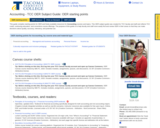
This guide compiles starting points for OER and freely available resources for Accounting courses and topics. This OER subject guide was created for TCC faculty and staff and reflects TCC credit, continuing education, and corrections course offerings. The purpose of this guide is to help faculty and staff more easily find and review OER in their areas so that they can make decisions about quality, accuracy, relevancy, and potential use.

This module takes its name from The Other America by Michael Harrington, a study of 1950s U. S. poverty. From the 1700s, many American white people of European heritage have lacked the land, education, skills, or opportunities for advancement. White identity movements have drawn on regionalism, clannishness, racism, xenophobia, fear, and class resentments. With economic distress, movements have coalesced around feelings that the country is not working for them. Poor and working class whites gave impetus to Populism and insurgent “white identity” movements supporting Huey Long, George Wallace, and recently Donald Trump.Another important element is “race” -- a word and concept developed to justify the colonization and control (and enslavement) of black Africans by white Europeans and Americans. They used fake “race” science to justify colonization, the slave trade and subordination of Blacks.A complete, objective history requires an understanding of Americans who join in such identity politics.

Students will learn about the basics of sexual and reproductive anatomy, as well as periods and menstrual care. This lesson is not intended to be divided by gender. We recommend all students learn together, as there is value in understanding all body types and functions, additionally this practice can help students de-stigmatize the natural variations in bodies and experiences.

This lesson provides a brief overview of sexual and reproductive anatomy, and explains how to complete self exams of breasts and testicles. It reviews the basics of reproduction, and introduces the many ways of becoming parents. The final activity asks students to consider the many responsibilities of becoming a parent.
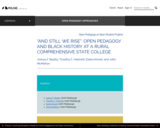
In Spring 2019, students at The State University of New York College at Plattsburgh (SUNY Plattsburgh) researched, designed, and built And Still We Rise: Celebrating Plattsburgh’s (Re)Discovery of Iconic Black Visitors (ASWR), an exhibit in the Feinberg Library on prominent Black political and cultural figures who had visited the college since the 1960s. The thirteen students in African-American Political Thought (Political Science 371), taught by Dr. John McMahon, researched in the college’s archives and secondary sources to curate photos, text and multimedia for physical and virtual exhibits.
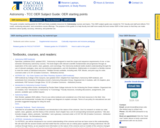
This guide compiles starting points for OER and freely available resources for Astronomy courses and topics. This OER subject guide was created for TCC faculty and staff and reflects TCC credit, continuing education, and corrections course offerings. The purpose of this guide is to help faculty and staff more easily find and review OER in their areas so that they can make decisions about quality, accuracy, relevancy, and potential use.
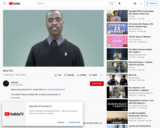
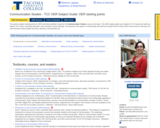
This guide compiles starting points for OER and freely available resources for Communication Studies courses and topics. This OER subject guide was created for TCC faculty and staff and reflects TCC credit, continuing education, and corrections course offerings. The purpose of this guide is to help faculty and staff more easily find and review OER in their areas so that they can make decisions about quality, accuracy, relevancy, and potential use.

Students will learn about condoms as a form of contraception and STI prevention, as well as talk about safer sex strategies, communication, and how to reserach and access healthcare services and testing.

The lesson introduces students to various contraceptive methods used for pregnancy prevention. The lesson ends with a critical thinking exercise that asks students to figure out the best type of contraception for various teens in different situations.

This lesson reviews the basics of safer sex practices and contraception. It also introduces several laws in Oregon that revolve around consent, reproductive and sexual health access, medical consent, and more.
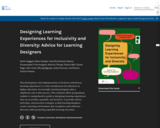
The development and implementation of inclusive and diverse learning experiences is a vital consideration for educators in higher education. Increasingly, learning designers play a significant role in this process. This textbook offers postgraduate students a comprehensive guide to designing learning experiences that are accessible, equitable, and inclusive. It provides advice, principles, and practical strategies to help learning designers create a learning environment that recognises and celebrates diversity while promoting equitable learning outcomes.
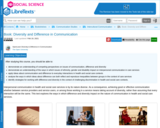
Interpersonal communication in health and social care services is by its nature diverse. As a consequence, achieving good or effective communication whether between service providers and service users, or among those working in a service means taking account of diversity, rather than assuming that every interaction will be the same. This text explores the ways in which difference and diversity impact on the nature of communication in health and social care services.
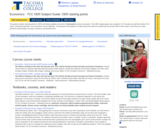
This guide compiles starting points for OER and freely available resources for Economics courses and topics. This OER subject guide was created for TCC faculty and staff and reflects TCC credit, continuing education, and corrections course offerings.. The purpose of this guide is to help faculty and staff more easily find and review OER in their areas so that they can make decisions about quality, accuracy, relevancy, and potential use.

In this lesson we explore how bullying can affect us all, even when it’s not happening directly to us we might feel confused, scared, and uncomfortable. We read a book called Beautifully Me about a young girl who is confused about the ways people are talking about bodies- specifically large, or fat bodies. We talk about how feelings and emotions can be signals to us, sometimes they’re letting us know something in our world doesn't make sense and we might need help figuring it out. The lesson ends by thinking of the people/adults at home and school that they can go to for help.
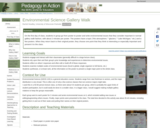
This is a specific lesson plan for an in-class constructivist learning activity. It lives on a website with a wide menu of assessments and pedagogical approaches to teaching students introductory geoscience.

This guide compiles starting points for OER and freely available resources for interdisciplinary Environment and Sustainability-themed courses and topics. This OER subject guide was created for TCC faculty and staff and reflects TCC credit, continuing education, and corrections course offerings. The purpose of this guide is to help faculty and staff more easily find and review OER in their areas so that they can make decisions about quality, accuracy, relevancy, and potential use.

This lesson focuses on treating others with respect regarding gender expression. In the lesson students use their culminating understanding of gender and gender expression to create paper dolls. Then they use the dolls to role play a respectful, affirming and inclusive approach to the gender expression of themselves and others.